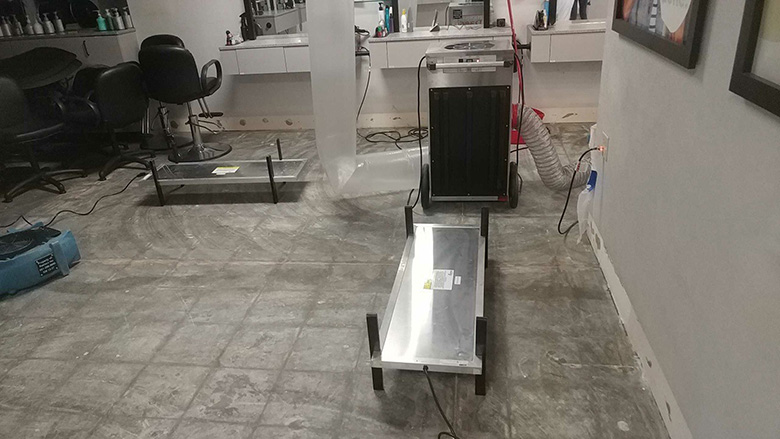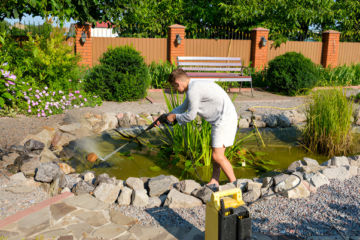Drying Dynamics: Mastering The Science Of Water Damage Restoration

Water damage restoration is a multifaceted process that involves much more than simply removing water from a structure. This sector is based on drying dynamics, a complicated discipline that combines ideas from physics, engineering, and environmental science to solve the challenge of restoring and mitigating property damage caused by water. In this comprehensive exploration, we delve into the key components of drying dynamics, the principles guiding the process, and the advanced techniques used to master this critical aspect of water damage restoration.
Comprehending The Process Of Drying
Drying dynamics refer to the complex interplay of factors that influence the evaporation and removal of moisture from water-damaged materials. These factors include temperature, humidity, air movement, and the properties of the affected materials. Achieving optimal drying conditions requires a deep understanding of how these variables interact and affect the drying process.
The Role Of Temperature
Temperature plays a crucial role in drying dynamics, as it directly impacts the rate of evaporation. When the temperature rises, the energy of the water molecules increases, hastening the process by which they change from a liquid to a vapor. Secondary damage, including material deformation or delamination, can also result from exceedingly high temperatures. Therefore, maintaining a carefully controlled temperature is essential for efficient and safe drying.
Humidity Control
Humidity, or the amount of moisture present in the air, is another critical factor in drying dynamics. More water vapor may be held by warmer air because of the air’s increased capacity to retain moisture as temperature rises. By controlling humidity levels through dehumidification equipment, restoration professionals can create an environment conducive to rapid evaporation and moisture removal. Maintaining optimal humidity levels prevents excessive moisture from reabsorbing into materials and promotes efficient drying.
Importance Of Air Movement
Air movement is essential for facilitating the transfer of moisture from wet materials to the surrounding air. Through the use of air movers, which generate high-velocity airflow, restoration professionals can expedite evaporation and enhance drying efficiency. Proper positioning of air movers is crucial to ensure uniform drying throughout the affected area. By strategically directing airflow, technicians can target hard-to-reach areas and accelerate the drying process.
Material Considerations
The type and porosity of materials affected by water damage also influence drying dynamics. Drying porous materials like drywall, carpeting, and upholstery may be a challenge because of how easily they absorb water. Non-porous materials, such as tile or metal, are less susceptible to water absorption but May still require thorough drying to prevent secondary damage, such as mold growth or corrosion.
Advanced Techniques In Water Damage Restoration
Mastering the science of drying dynamics requires proficiency in a range of advanced techniques and technologies. These include:
Moisture Mapping
In order to determine the full extent of water damage and track the drying process, moisture mapping makes use of specialized technology, including thermal imaging cameras and moisture meters. By creating detailed moisture maps of affected areas, restoration professionals can identify moisture hotspots, track drying trends, and adjust drying strategies as needed to ensure comprehensive moisture removal.
Psychometric
Psychometric is the study of the thermodynamic properties of air and water vapor and plays a central role in understanding drying dynamics. By analyzing psychometric charts and calculating specific humidity, dew point, and vapor pressure differentials, restoration professionals can make informed decisions regarding temperature and humidity control to optimize the drying process.
Desiccant Dehumidification
Desiccant dehumidification is a highly effective method for controlling humidity levels in water damage restoration settings. Unlike traditional refrigerant dehumidifiers, which condense moisture out of the air, desiccant dehumidifiers use desiccant materials to adsorb moisture directly from the air stream. This allows for lower humidity levels to be achieved, even in cold or humid conditions, making desiccant dehumidifiers ideal for challenging drying scenarios.
Low Grain Refrigerant (Lgr) Dehumidification
LGR dehumidifiers are specialized refrigerant dehumidifiers designed to achieve lower humidity levels than conventional units. By cooling the air below its dew point and extracting moisture through condensation, LGR dehumidifiers can effectively dry air to extremely low moisture levels, making them invaluable tools for moisture removal in water damage restoration applications.
Conclusion
If you want to be a successful water damage restoration expert, you need to study drying dynamics. By understanding the complex interplay of temperature, humidity, air movement, and material properties, restoration professionals can implement advanced techniques and technologies to expedite the drying process and restore affected properties to their pre-loss condition. Through ongoing education, training, and innovation, the field of water damage restoration continues to evolve, ensuring that properties impacted by water damage receive the care and attention they deserve.










